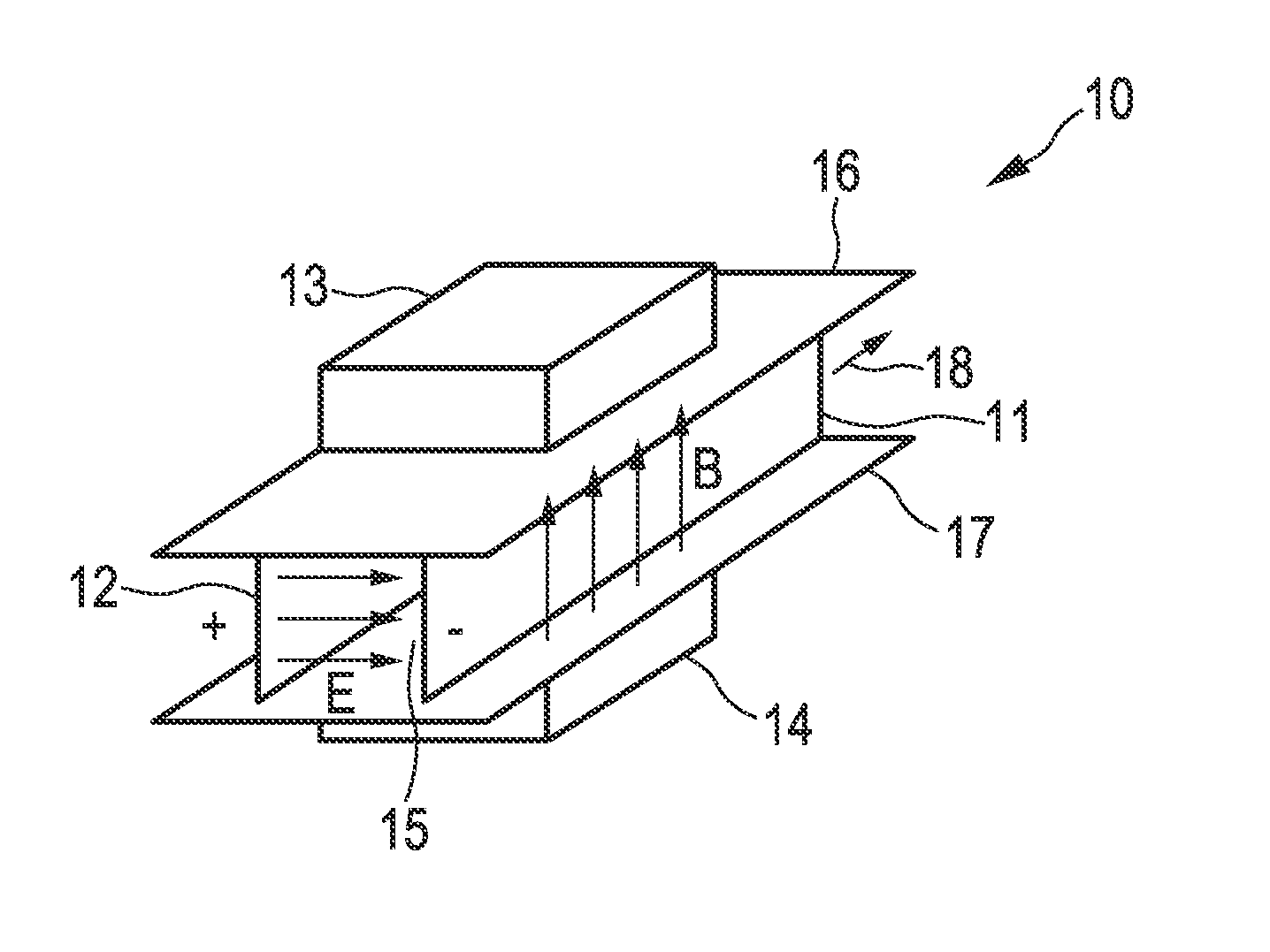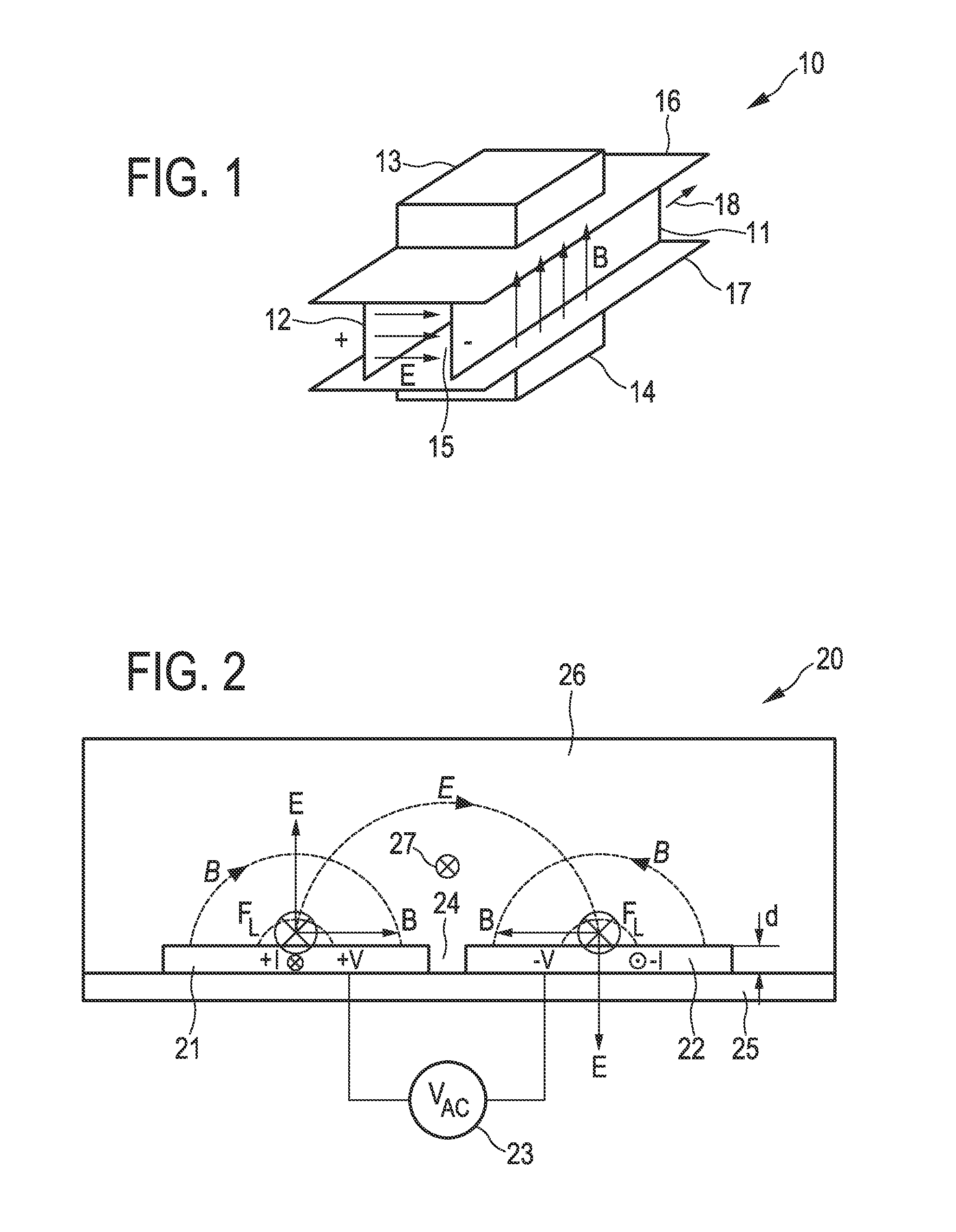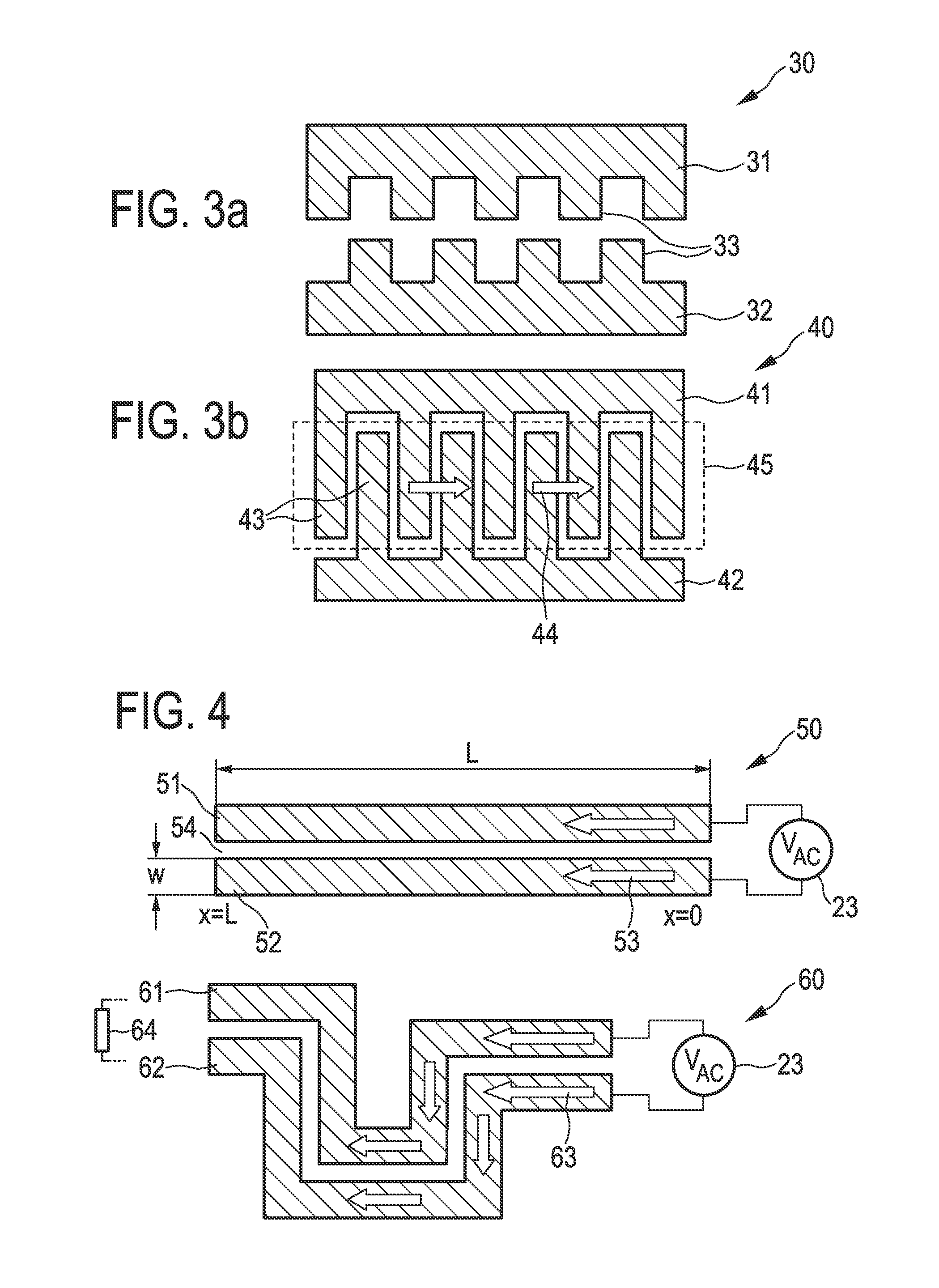Microfluidic device and method
a micro-fluidic and fluid technology, applied in the direction of positive displacement liquid engines, laboratory glassware, machines/engines, etc., can solve the problems of difficult or even impossible electrothermal fluid flow, low efficiency of electrothermal fluid flow, and inability to use simple electrodes. , to achieve the effect of shortening the length of the respective electrod
- Summary
- Abstract
- Description
- Claims
- Application Information
AI Technical Summary
Benefits of technology
Problems solved by technology
Method used
Image
Examples
third embodiment
[0057]A cross-section of an MHD cell 90 according to the present invention is shown in FIG. 7. In this embodiment only one substrate 98 is provided within the microfluidic channel 101 carrying all electrodes 91-94. In particular, the substrate 98 carries on its surface a pair of electric field electrodes 91, 92 provided with an electric potential +V, −V from a voltage source 95 and magnetic field electrodes 93, 94 provided with electric currents +I, −I from separate current sources 96, 97.
[0058]Similarly as in the embodiment shown in FIG. 6, a control unit 100 is provided for control of the voltage source 95 and the current sources 96, 97 to simultaneously provide the electric potential +V, −V and the electric currents +I, −I, respectively. Thus, a Lorentz force is generated in the direction 99 of the channel 101.
fourth embodiment
[0059]FIG. 8 shows a cross section of an MHD cell 20′ according to the present invention. This embodiment is quite similar to the embodiment shown in FIG. 2, but in the present embodiment a voltage source 23 for providing the electric potential +V, −V to the electrodes 21, 22 and a current source 28 for providing a current +I to only the electrode 21 are separately provided. Further, a control unit 29 for synchronizing the voltage source 23 and the current source 28 are provided.
[0060]Hence, according to this embodiment, a magnetic field B is only generated by the current +I through the electrode 21 which is generally sufficient for generating—in combination with the electric field E—a Lorentz force.
fifth embodiment
[0061]FIG. 9 shows a cross section of an MHD cell 90′ according to the present invention. This embodiment is quite similar to the embodiment shown in FIGS. 7 and 8. The present embodiment, however, comprises only a single magnetic field electrode 93 and a single current source 96, separate from the electric field electrodes 91, 92 and the voltage source 95. Thus, like in the embodiment shown in FIG. 8, only one current +I is provided for generating a magnetic field B.
[0062]This is one example of a more general case which is that of two coplanar substrates opposite to each other in such a way that magnetic and electric fields enhance each other. With respect to an embodiment with opposite sides, there are 2 configurations: a) two coplanar substrates where each individual coplanar substrate provides a Lorentz force, and (b) one side carries the voltage-driven electrodes while the other side carries the current-driven electrodes. In this case both sides are necessary to provide the Lor...
PUM
 Login to View More
Login to View More Abstract
Description
Claims
Application Information
 Login to View More
Login to View More - R&D
- Intellectual Property
- Life Sciences
- Materials
- Tech Scout
- Unparalleled Data Quality
- Higher Quality Content
- 60% Fewer Hallucinations
Browse by: Latest US Patents, China's latest patents, Technical Efficacy Thesaurus, Application Domain, Technology Topic, Popular Technical Reports.
© 2025 PatSnap. All rights reserved.Legal|Privacy policy|Modern Slavery Act Transparency Statement|Sitemap|About US| Contact US: help@patsnap.com



